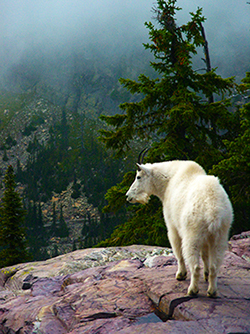Understanding Oil Painting MediumsUnderstanding Oil
Painting Mediums 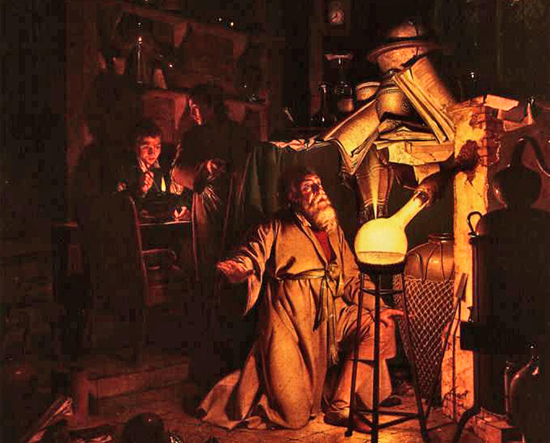 The Alchemist Joseph Wright  il painting mediums have probably been around as long as painting has, but never, perhaps, has there been more uncertainty and confusion about their properties and uses, especially among beginning painters. In this article we discuss their properties, allowing you to compare the various tried-and-true formulas. While not intended to be an exhaustive examination of all possible medium formulas, we hope this article will help you to understand mediums better and to choose one that is best for you. You'll learn some of the history of painting mediums, what doesn't work, and what the modern safer replacements for the old formulas are. il painting mediums have probably been around as long as painting has, but never, perhaps, has there been more uncertainty and confusion about their properties and uses, especially among beginning painters. In this article we discuss their properties, allowing you to compare the various tried-and-true formulas. While not intended to be an exhaustive examination of all possible medium formulas, we hope this article will help you to understand mediums better and to choose one that is best for you. You'll learn some of the history of painting mediums, what doesn't work, and what the modern safer replacements for the old formulas are.History
The earliest known pigments were earth colors, literally made from colors found in the earth, ground into a fine powder, and then mixed with a liquid vehicle, such as water. Once applied, the water would evaporate and leave the pigment on the surface. Unless protected form the elements, as in a cave, these crude paints would soon be erased. So artists experimented with different substances - animal fat, tree saps and plant resins, for example, to try to obtain a binder, or glue which would give the paint more adhesion and durability. Many of these substances proved to have unsuitable aging or durability characteristics and were therefore replaced as different materials were discovered to work better. Eventually some of these early artists discovered that oils derived from the crushed seeds of certain plants could provide an excellent binder/vehicle component which would not only impart fluidity to their pigment mixes, but also a hard and durable finish when thoroughly dry. While many other types of plant oils have been tried over the centuries and found to be suitable to the task, the oil extracted from flax seeds, known as linseed oil, soon became recognized as a superior binder and vehicle for all types of pigments and gave rise to what are known as oil paints. 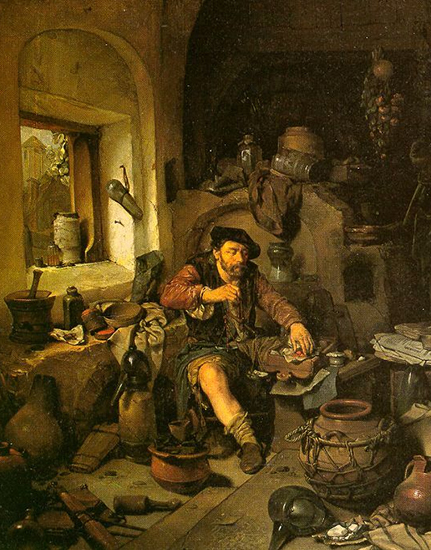 Because there were no paint manufacturers in ancient times, artists had to make all their own paints. If one wanted to be a painter, one therefore had to become a chemist as well. Paint formulas were guarded secrets and often passed from master artist to apprentice. In the days of custom hand-made paints, a great artist could be known not only by his distinctive painting technique or style, but also by the fact that his paint formulas would impart a unique look to his work that no other artists could easily emulate. Artists experimented with pigments and binders for centuries in search of the perfect combinations of materials which would give the paint good brushing/handling characteristics, glossy finish, predictable drying times and hopefully, longevity. Some of these materials proved to be highly toxic to the artists and assistants who handled them, and this knowledge, too, was slowly handed down by word of mouth. Because there were no paint manufacturers in ancient times, artists had to make all their own paints. If one wanted to be a painter, one therefore had to become a chemist as well. Paint formulas were guarded secrets and often passed from master artist to apprentice. In the days of custom hand-made paints, a great artist could be known not only by his distinctive painting technique or style, but also by the fact that his paint formulas would impart a unique look to his work that no other artists could easily emulate. Artists experimented with pigments and binders for centuries in search of the perfect combinations of materials which would give the paint good brushing/handling characteristics, glossy finish, predictable drying times and hopefully, longevity. Some of these materials proved to be highly toxic to the artists and assistants who handled them, and this knowledge, too, was slowly handed down by word of mouth.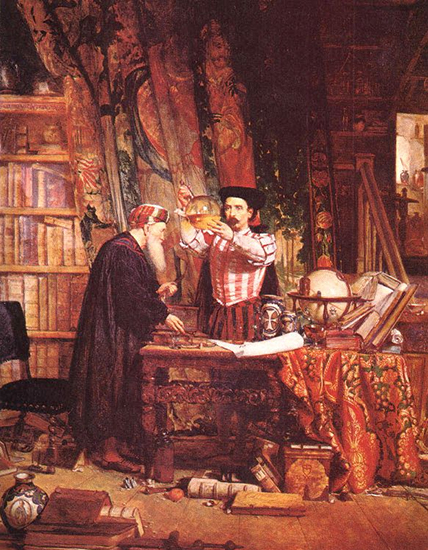 With the development of reliable oil-based paint mixtures, artists were also experimenting with painting mediums which could be added to their crude paints and which would give them better handling and finish characteristics. Perhaps the very first true painting medium discovered, still in use today, is sun-thickened linseed oil, pressed from flaxseed. It was probably discovered by accidentally leaving the oil out to bake in the sun for many hours. This heating process changed the nature of the oil. While it was no longer suitable to grind pigments with to make paint, it was discovered to have superior paint leveling properties. Mixing a small amount of this oil with prepared paints could give paintings an enamel-like appearance, without the yellowing of normal linseed oil. As more artists started using it in their paintings, this new enamel-like appearance changed the way paintings looked from that moment on. With the development of reliable oil-based paint mixtures, artists were also experimenting with painting mediums which could be added to their crude paints and which would give them better handling and finish characteristics. Perhaps the very first true painting medium discovered, still in use today, is sun-thickened linseed oil, pressed from flaxseed. It was probably discovered by accidentally leaving the oil out to bake in the sun for many hours. This heating process changed the nature of the oil. While it was no longer suitable to grind pigments with to make paint, it was discovered to have superior paint leveling properties. Mixing a small amount of this oil with prepared paints could give paintings an enamel-like appearance, without the yellowing of normal linseed oil. As more artists started using it in their paintings, this new enamel-like appearance changed the way paintings looked from that moment on.One popular medium, known as Maroger's, was made by grinding pigments with "yellow varnish". Yellow varnish was made by melting dammar crystals (a tree resin) in hot linseed oil, mixing them with a water-in-oil emulsion paste. This paste was made mixing a gum arabic (acacia tree sap) solution into the same varnish. During painting, the colors were thinned with "black oil". Black oil is made by cooking linseed oil with white lead or Litharge. Some other materials that artists experimented with in their paintings, such as certain mastics, imparted desirable handling characteristics when wet and fresh, but proved disastrous over time, eventually destroying the paintings. As you can see, the process of discovery and proof of performance of what might turn out to be poor materials could take generations to sort out this way. A mixture of linseed oil with mastic varnish, a plant resin, (Pistacia lentiscus), lead acetate and turpentine created the medium called megilp. Megilp was widely used in the 18th and 19th centuries for its buttery surface. However, if not mixed very carefully, it could crack, blister and turn brown with age. Today it is considered undesirable and outmoded and has been replaced with modern alkyd synthetics, such as Gamblin's NeoMegilp. Solvents Changed Everything Experimentations with certain tree saps gave rise to the invention of the turpentine solvents. The development of an effective and reliable solvent through the process of distillation, paved the way for the further development of painting mediums. The solvents gave artists additional control over the consistency of their paints and imparted fluidity and rapid drying characteristics to early mediums. While certainly useful in the brush cleaning or paint removing processess of painting, a solvent's main action upon the oil paints is to break down the binding action of the oils, thus thinning the paint. Thinning the paint beyond a certain point would lead to loss of adhesion, but with practice, artists figured out how to use thin paint safely. Solvents also allowed mediums to be "cut" or diluted, often in precise amounts, which led to a greatly expanded variety of paint surface possibilities. This ability to thin the first layers of a painting without destroying the paint film adhesion eventually led artists to develop the very popular technique of painting "fat over lean". Paintings were built up slowly with thin layers of paint and medium, known as glazing, slowly reducing the medium/solvent mix with the final strokes heavy in oil and pigment. With Progress, Some Losses A significant change occured at the time of this great scientific development. With specialists taking over the preparation of artists' materials, artists were able to concentrate entirely on the painting process. However, with this freedom from the laborious tasks of manufacturing their own paint materials, artists also lost their in-depth knowledge of the composition of their paints and other materials. “During the eighteenth century, and more completely during the nineteenth, the knowledge and intelligent study of the methods and materials of painting fell into a sort of dark age, from which our contemporary painters have by no means entirely emerged. Good craftsmanship and a thorough knowledge of materials and methods continued to be the concern of some painters, but they were exceptions to the general trend.” - The Artist's Handbook of Materials and Techniques: Fifth Edition, Revised and Updated (Reference) Mediums and Solvents Today Linseed, poppy and safflower are the most commonly used drying and semi-drying oils. Oils can be used to change the drying time, the gloss and the consistency of colors. They are helpful in maintaining flexilbility in paint, particularly when working fat over lean. They also help to prevent over-thinning when working with solvents. Linseed Oil is available today in several different forms: Refined Linseed Oil, Cold Pressed Linseed Oil, Thickened Linseed Oil (Stand Oil), Drying Linseed Oil. Refined Linseed Oil is steam-pressed and further refined with sulphuric acid and water to remove impurities. It adds gloss and transparency and has a durable film. This has made it one of the most popular binders in oil paint for almost five centuries. However, it has some yellowing with age. It has a thin viscosity and dries at a moderately slow rate. Refined linseed oil will thin mediums and allow for a long “open” time when using wet techniques. Cold Pressed Linseed Oil is the purest grade of natural oil and is paler in color and less yellowing than hot pressed or solvent extracted oils. It also makes a stronger film. It dries slightly more quickly than refined linseed oil and increases gloss and transparency. It reduces consistency and brushstrokes, and is often used in grinding pigments. Stand Oil is thicker than linseed oil. It creates a tough paint film without the yellowing tendencies of refined linseed oil. Stand oil causes oil colors to flow out as they dry, minimizing brush strokes. It is an excellent painting and glazing medium and can be thinned with turpentine and damar varnish. It is not suitable for making oil paint. Stand Oil is made by heating linseed oil at a high temperature for many hours. The molecular change that occurs - polymerization - creates a a heavy oil close in consistency to honey. Drying Linseed Oil is darker than refined linseed oil. It promotes the fastest drying rate of all the oils, while increasing gloss. It improves flow, and can be added to other oils to speed drying. Poppyseed and Walnut Oils have been used as drying oils from the earliest recorded times to the present day, but have always been less popular than linseed oil. Poppy oil is naturally colorless or very light straw-colored. It is sometimes used in the manufacture of whites and lighter colored paints. It has a slow drying rate. Poppy oil yields a paint film that can become brittle with age. Walnut Oil dries more rapidly than poppy oil. It has less durability than linseed oil. Walnut oil is cold pressed from walnuts and refined for purity. It can become rancid if stored for too long. Poppyseed and walnut oils can be mixed with linseed oil. Other Oils Soya bean oil is considered to be inferior to linseed and always requires driers. Sunflower seed oil and hempseed oil have properties resembling poppy oil, but are considered to be inferior. Safflower oil is used in the manufacture of non-yellowing alkyd resins and is a good vehicle for white and light colored paints. It is considered to be close in usefulness to linseed oil, but may yield a more brittle film. Modern Synthetics Alkyd Resin is produced by a reaction of natural oil with a poly-functional alcohol and poly-basic acid (originally named "alcid"). Alkyds were initially developed by General Electric in the 1920's as a coating for electrical wires. The first real alkyd resin medium was produced by Winsor & Newton in the 60’s, called Liquin. It was produced as an all around oil painting medium with the primary benefit of fast drying properties. As a binder, alkyd resin cannot hold as high a pigment load as linseed oil. Alkyd resin painting mediums are popular because they are made with milder solvents and speed the drying time of oil colors. Thin layers of oil colors mixed with alkyd resin painting medium will dry in 24 hours and make very tough, yet flexible paint films. Alkyd-based painting mediums can also add gloss and transparency to paint layers. Good for layering, alkyd mediums can be used for very complex glazing applications. Drying time can be extended by adding a few drops of linseed oil. Mineral spirits can be used for thinning. Alkyd mediums can be used in underpaintings for traditional oils, beneath fatter layers, or from start to finish in every layer. For optimal adhesion, alkyd mediums should not be used over the top of traditional oil painting mediums or unmodified, slow-drying paint. While alkyds as a class are a very durable material, often used in exterior paints and varnishes, they can become brittle with age and must be used judiciously by the artist. 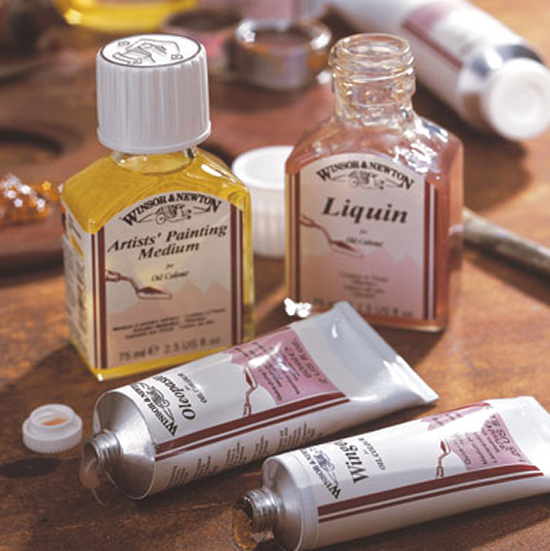 From Winsor and Newton: "Traditional oil based mediums are made from a combination of oil and solvents, while the alkyd based mediums combine synthetic alkyd resins and solvents. Because alkyd resin functions in much the same way as linseed oil, alkyd mediums may be added to conventional oils. Alkyd resin mediums offer dramatic advantages by accelerating the speed of drying, as well as adding a unique, natural translucency. Adding Liquin will make a colour layer fatter. Adding solvent will make a colour layer leaner. Therefore only the lower layers should contain solvent and the upper layers should contain increasing amounts of Liquin. Because Liquin is a medium and not a solvent there is no upper limit to its ratio with oil colour, however it is recommended that at high proportions the layers are applied as finely as possible." These days alkyd mediums come in many "flavors", depending on what the artist prefers. The basic paint-modifying options are: thinning, thickening, glossy finish, matte finish, fast drying time, slow drying time. To add to the rather bewildering range of options, one can buy them in Fluids or Gels. Fluids can be obtained in both fast or slow-drying, high viscosity (thicker, can show brush marks), or low viscosity (great for washes). Gels are thicker than the high viscosity fluids, and can be used to show pronounced brushmarks in the paint film and will not turn into a fluid as they are worked. Gels also come in various viscosities aimed principally at the painters who want to develop more impasto in their work. 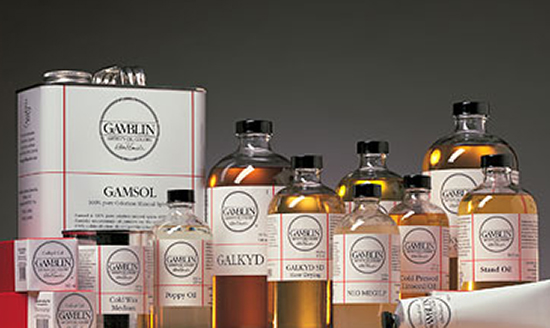 "Galkyd has a lower level of solvent and less driers. Our method of gelling the mediums keeps them clear and jewel-like rather than cloudy like Liquin is. Gamblin has never tried to copy Liquin exactly. Neo Megilp is similar to Liquin's texture. Galkyd is similar to Liquin's dry time. Galkyd Lite is close in dry time also, but it is a low viscosity medium so it affects paint very differently. The gloss level of Galkyd Lite is probably the closest to Liquin." Author's Note: Our personal favorite mediums are all made by Robert Gamblin and include: Galkyd, Galkyd Lite and NeoMegilp. These are best thinned and cleaned with Gamsol, Gamblin's proprietary odorless cosmetic-grade solvent. Driers Cobalt Drier reduces drying times by attracting oxygen more quickly to the paint film. It is a viscous purple fluid made by cooking cobalt salts in linseed oil. it should be used sparingly (no more than 5%) and may alter colors slightly, especially light colors. Cobalt drier is useful when added to glazing mediums containing stand oil, pure gum turpentine and damar varnish. 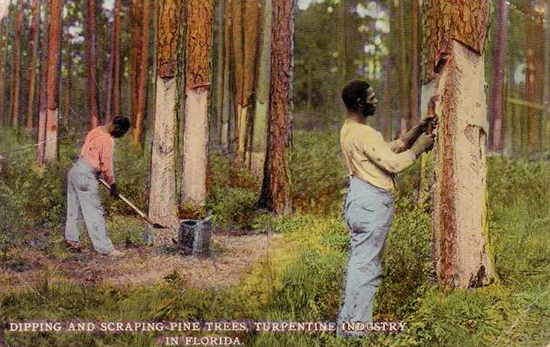 Historic Photograph of Turpentine Harvest Turpentine, acetone, and mineral spirits are often called "solvents". You can't paint with them directly because they will not form the necessary film that pigment requires in order to become "dry" paint. A solvent is a liquid, solid, or gas that dissolves another solid, liquid, or gas. So the terms, "solvent" and "oil" derive their meaning from how they are used. In other words, an oil can be a thinner/solvent. Gum Spirits of Turpentine is an organic solvent used for thinning oil-based paints, for producing varnishes, and as a raw material for the chemical industry. Its vapor can irritate the skin and eyes, damage the lungs and respiratory system, as well as the central nervous system when inhaled, and can cause renal failure when ingested, among other things. Being combustible, it also poses a fire hazard. Odorless Mineral Spirits can be substituted for turpentine in all painting functions which do not include dammar. It is a good alternative for paint thinning and general clean-up. It also requires adequate ventilation. Odorless mineral spirits are petrochemicals, with the toxic aromatic (smelly) fractions removed, making them less toxic than gum turpentine, mineral turpentine, or white spirit. They are also slower evaporating than turpentines, so that very little vapor is generated during a painting session. This factor may be more important than the lower toxicity itself. They do, however, evaporate over time. Spirit of Petroleum is a refined petroleum oil most effective in thinning out colors and providing a smoothness in application similar to watercolor painting. It evaporates quickly. Canada Balsam, also called Canada turpentine or balsam of fir, is a turpentine which is made from the resin of the balsam fir tree (Abies balsamea) of boreal North America. Since it does not crystallize with age, its optical properties do not deteriorate. However, it has poor thermal and solvent resistance. It dries to a clear transparent film. It is used as a plasticizing resin for varnishes and mediums. Venice Turpentine is heavy, thick liquid made from the sap of the Austrian larch or the western larch (Larix occidentalis). Added to oil paints, mediums and varnishes it creates a tough, enamel-like surface. Because it has a characteristic of yellowing with time, it should be used in combination with drying oils like stand oil or volatile oils like turpentine. Venice turpentine is also used as a coating on horses' hooves to harden and create a barrier against water. Strasbourg Turpentine (Olio d’Abezzo) is made from the silver fir of the Tyrol and is similar to Venice turpentine. It was preferred by 17th century artists. Oil of Spike or Spike Lavender is distilled from Lavandula spica, a broad-leafed variety of lavender which grows wild in Europe and is cultivated in Spain. It is not the same cultivar which is used to create the oil of lavender used in perfumery. It has properties similar to turpentine, but has a greater tendency to gum or oxidize when exposed to air. Spike oil is a natural and low-toxic substitute for turpentine. It evaporates more slowly than turpentine, mineral spirits or odorless mineral spirits. Many say that Oil of Spike Lavender was the medium used by Leonardo as well as the Netherlands painters. It has an appealing uplifiting scent, and only a small amount is needed - a drop or two at a time. Varnishes and Other Mediums Dammar was first introduced as a picture varnish in 1826, and is commonly referred to as dammar varnish. The varnish, made from dammar gum and turpentine is commonly used in oil painting, both during the painting process and after the painting is finished. Mixed with stand oil and turpentine, it makes a good all-around painting medium. Modern Maroger Medium is an update of the historic maroger medium and is made from linseed oil, mastic resin, gum arabic and black oil. It is used to improve paint handling and to create richer colors even when dry. Maroger Medium makes oil colors non-migratory. This can help in painting details by keeping colors separate. Caution is advised when using this product as it does still contain small amounts of lead. Cold Wax Medium is a soft paste used to make oil colors thicker and more matte. It is non-yellowing and can strengthen paint against shrinkage and cracking. Use 25% wax medium with 75% oil color for brush painting and 50% wax medium with 50% oil color for knife techniques. Ralph Mayer recommends this recipe for a good all-purpose glaze and oil-painting medium: Damar varnish (5-pound cut) - 1 fluid ounce Stand oil - 1 fluid ounch Pure gum turpentine - 5 fluid ounces Cobalt drier - about 15 drops” Another interesting book is Formulas for Painters Much of the information for this article was found on the very educational Gamblin website as well as in The Artist's Handbook of Materials and Techniques: Fifth Edition, Revised and Updated (Reference) |
Become an Artist's Road Member Today!
Already a Member?Log in here. To renew your membership, log in and follow the links. Search the SitePerspectivesNot ready to become a Member yet? Subscribe to our free email postcards, "Perspectives". Enter your email address here.
Member ContentFree ContentThe Artist's Road StoreNocturnes - A Primer on Night Painting Filled with inspirational examples by the masters of nightime painting, this little book is sure to fire up your creative energies. Never tried painting at night? We show you how it's done with a step-by-step-oil demo and a tale of night painting in the wilds of Rocky Mountain National Park. The Primer on Night Painting - Nocturnes is a 7 x 7" PDF download with 40 pages of text and images. It includes a gallery of paintings by masters of the nocturne, information to inspire and encourage you in your plein air nocturne painting, an illustrated step-by-step demo and tips for working in pastel and oil. Also available in a softcover edition. Check out the tools and other products that we use in our own art and travels in The Artist's Road Store. We only offer things for sale that we enthusiastically believe in.
About Us
|

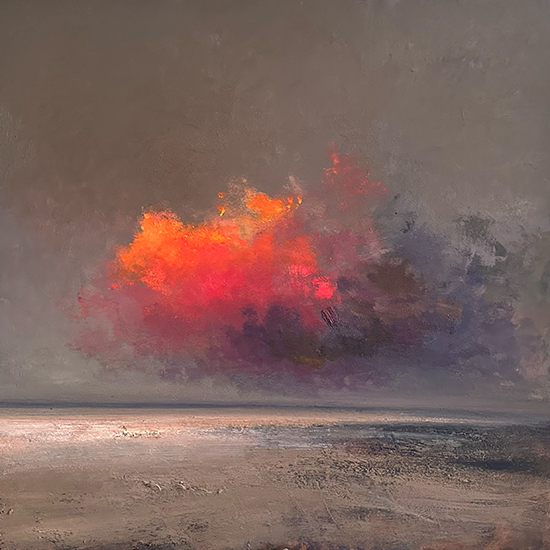 Voices of Experience:Richard K. Blades
Voices of Experience:Richard K. Blades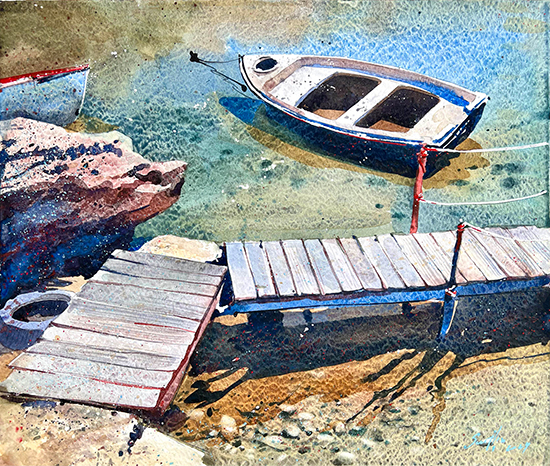
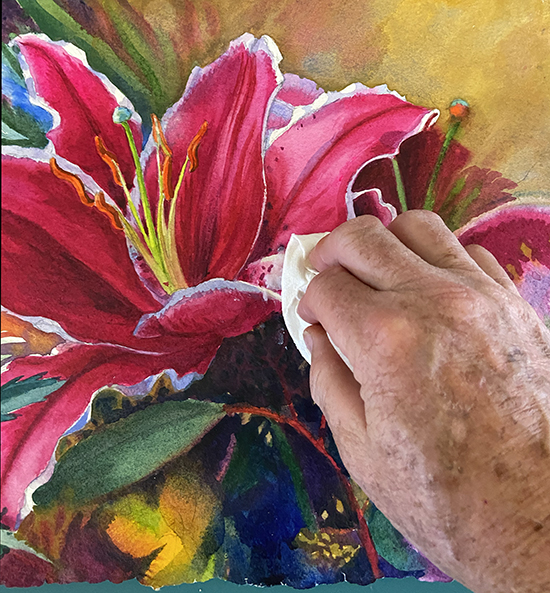 ing Watercolors
ing Watercolors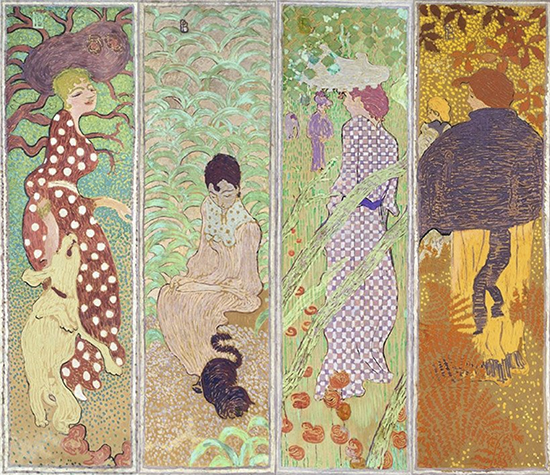
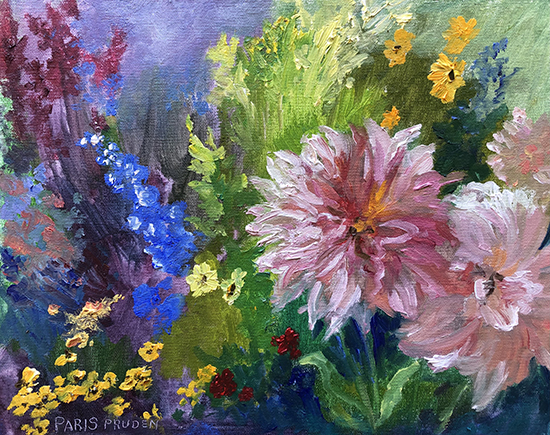
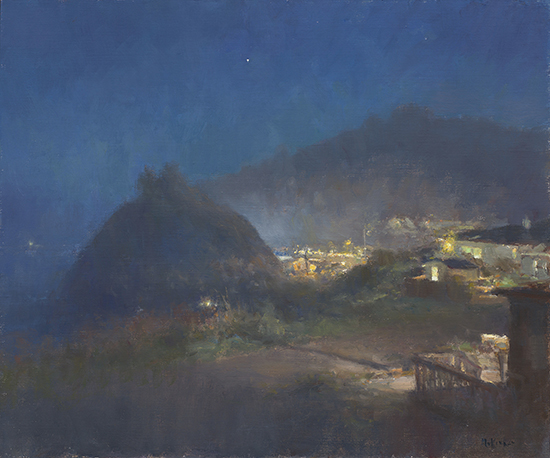 Nocturne Notes
Nocturne Notes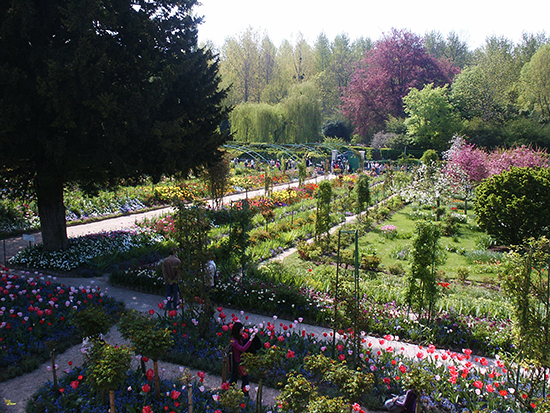 Inspiration in Monet's Gardens
Inspiration in Monet's Gardens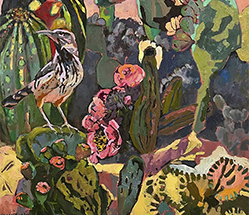
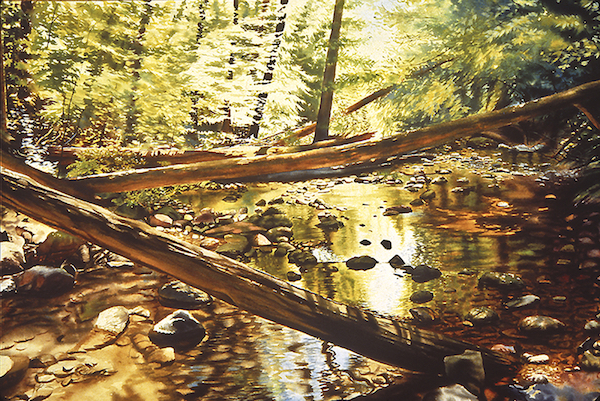 The Watercolor Medium
The Watercolor Medium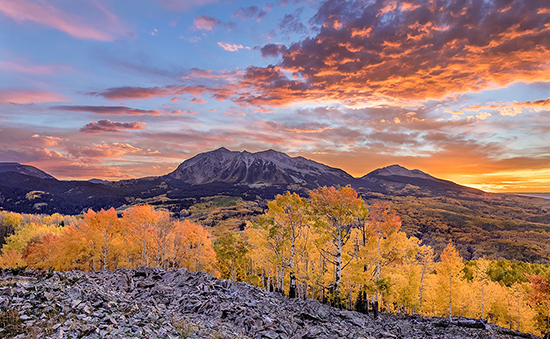
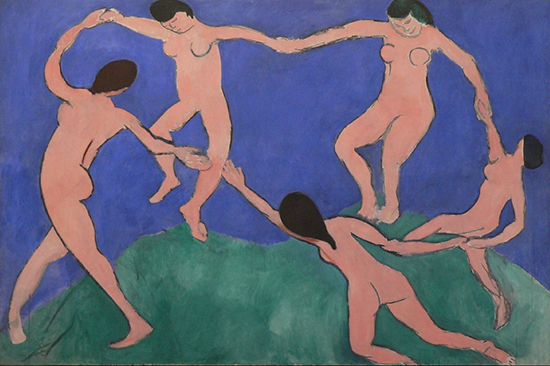 The Perspectives Archive
The Perspectives Archive
